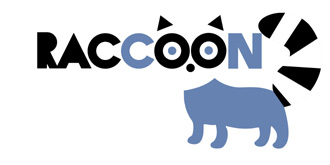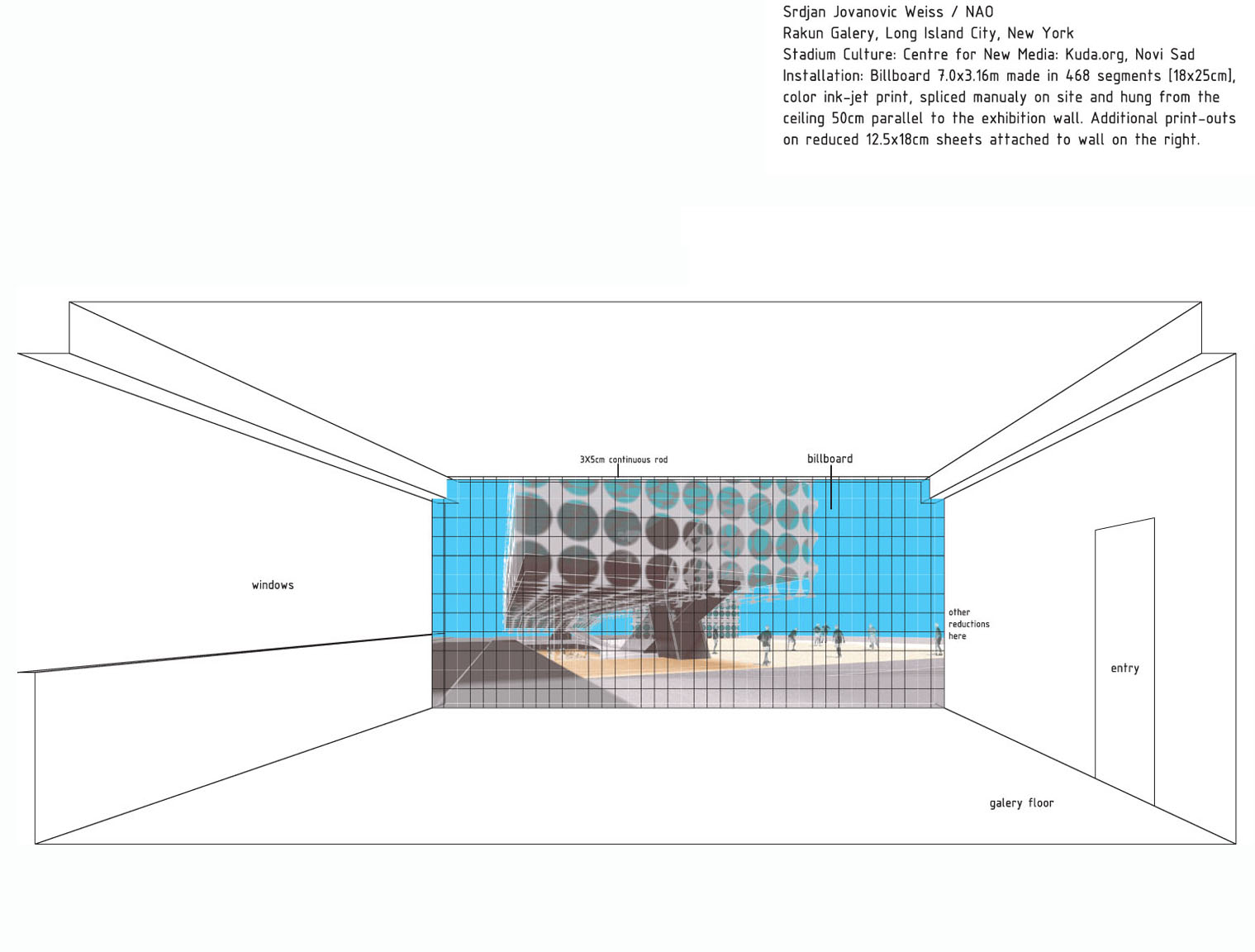718/784-9121
fax: 718/784-1858

| prostor
718/784-9121 fax: 718/784-1858 | 
|
| | |

 Stadium Culture is a ongoing project to renovate and expand an existing
open handball stadium located in Novi Sad to become an electronic youth
center and event place. The main challenge in this project is to initiate
the force of youth culture in a city that had plenty of state support
during both the Serbian&Yugoslav Kingdoms before the WWII and the
Socialist era after WWII. The damaging decade of nationalism and crisis in
Serbia during the '90s resulted in the total neglect of both official and
unofficial institutions for the youth, now yielding dangerous outcomes.
From the beginning of the 20th century both Western and Russian building
types were modified to create community athletic space for youth and
workers of Novi Sad. Later during the reign of the late Tito between WWII
until the early 1980s a number of institutions supporting culture were
initiated. Compared to the number of youth organizations in Novi Sad at
the time of Tito's death in 1980 (48), today's figure (3) demonstrates a
devastating score. The few that struggle to remain are the scouts and
ecological initiatives. A logical but unfortunate outcome of this
situation is the recent shift of young people towards political
extremisms. We propose a hybrid program for the Stadium based on the
difference between the two central agents for youth activity: sports and
electronic media, lingering at loose ends in today's transitional society.
Stadium is planed to create an identity that engages some positive
elements of the socialist past while defining urban future on some new
terms. Stadium needs to materialize the city's situation of being in a
complex transition space lingering at the outer edge of the European
Union. It is meant to become a dialogic diasporic public space bringing
young people together virtually, as well as in person, to participate in
the social and political impact of new technologies and in sports, play,
and friendly competition. Architecture takes clues from a flow of
alliances that a Center for New Media in the city had and has to make in
order to pursue this project towards the construction and it combines the
innovations of long lost modern architecture with emerging identity
politics of the electronic media.
Stadium Culture is a ongoing project to renovate and expand an existing
open handball stadium located in Novi Sad to become an electronic youth
center and event place. The main challenge in this project is to initiate
the force of youth culture in a city that had plenty of state support
during both the Serbian&Yugoslav Kingdoms before the WWII and the
Socialist era after WWII. The damaging decade of nationalism and crisis in
Serbia during the '90s resulted in the total neglect of both official and
unofficial institutions for the youth, now yielding dangerous outcomes.
From the beginning of the 20th century both Western and Russian building
types were modified to create community athletic space for youth and
workers of Novi Sad. Later during the reign of the late Tito between WWII
until the early 1980s a number of institutions supporting culture were
initiated. Compared to the number of youth organizations in Novi Sad at
the time of Tito's death in 1980 (48), today's figure (3) demonstrates a
devastating score. The few that struggle to remain are the scouts and
ecological initiatives. A logical but unfortunate outcome of this
situation is the recent shift of young people towards political
extremisms. We propose a hybrid program for the Stadium based on the
difference between the two central agents for youth activity: sports and
electronic media, lingering at loose ends in today's transitional society.
Stadium is planed to create an identity that engages some positive
elements of the socialist past while defining urban future on some new
terms. Stadium needs to materialize the city's situation of being in a
complex transition space lingering at the outer edge of the European
Union. It is meant to become a dialogic diasporic public space bringing
young people together virtually, as well as in person, to participate in
the social and political impact of new technologies and in sports, play,
and friendly competition. Architecture takes clues from a flow of
alliances that a Center for New Media in the city had and has to make in
order to pursue this project towards the construction and it combines the
innovations of long lost modern architecture with emerging identity
politics of the electronic media.
Author: Srdjan Jovanovic Weiss [Normal], NAO design team: Srdjan Jovanovic Weiss, Ivana Sovilj, Emir Hadziahmetovic, Ruzica Jovanovic [urbanism], Katherine Carl [art consulting], Andreja Miric [intern], Jelena Mitrovic [intern], Dejan Mrdja [intern], Joseph R. Roumeliotis [intern], Dubravka Sekulic [intern].
the nao / 147 essex street, new york, ny 10002, tel. +1.646.209.8486 fax.
+1.212.505.1648
architecture: www.thenao.net / interdisciplinary:
www.schoolofmissingstudies.net

